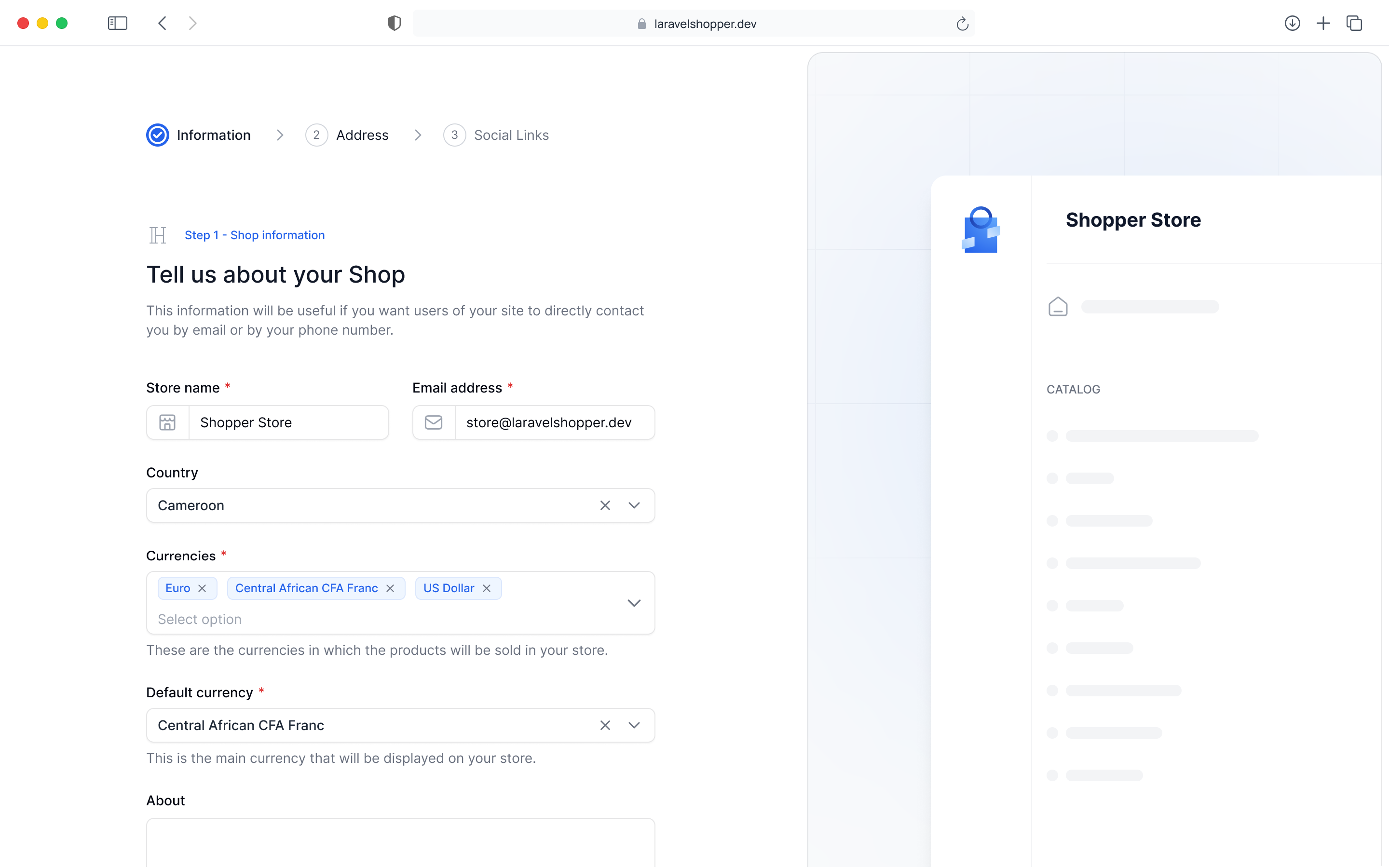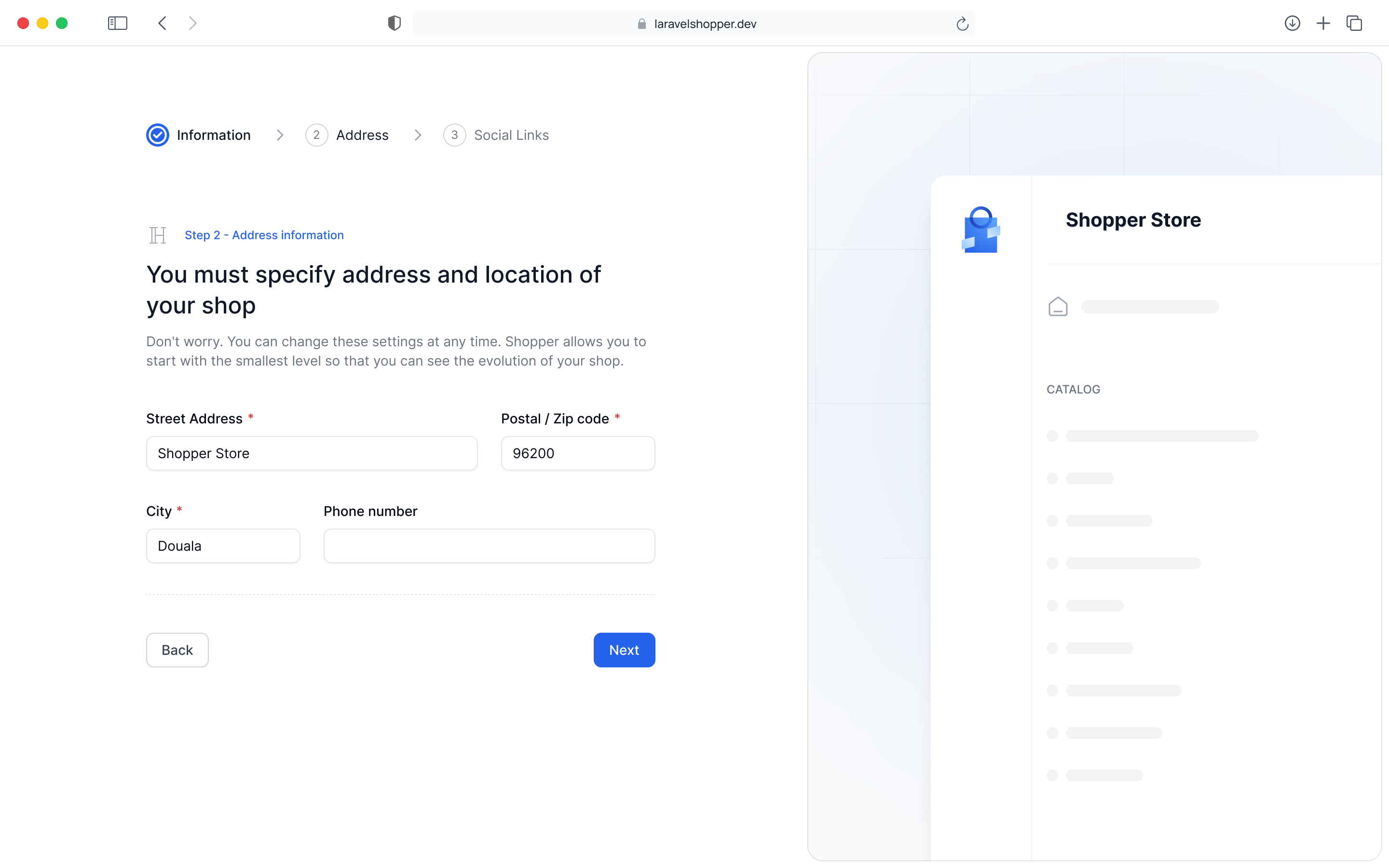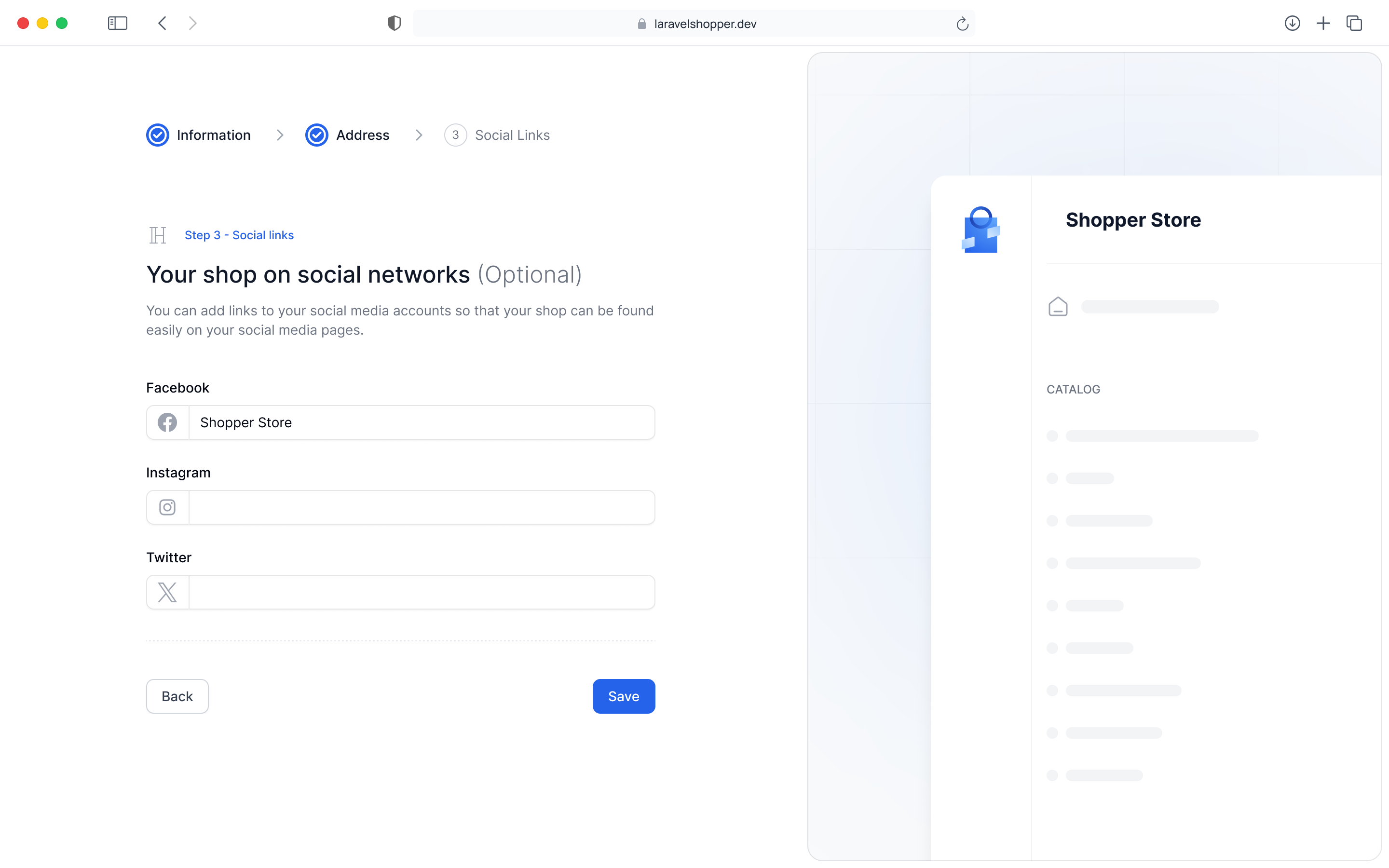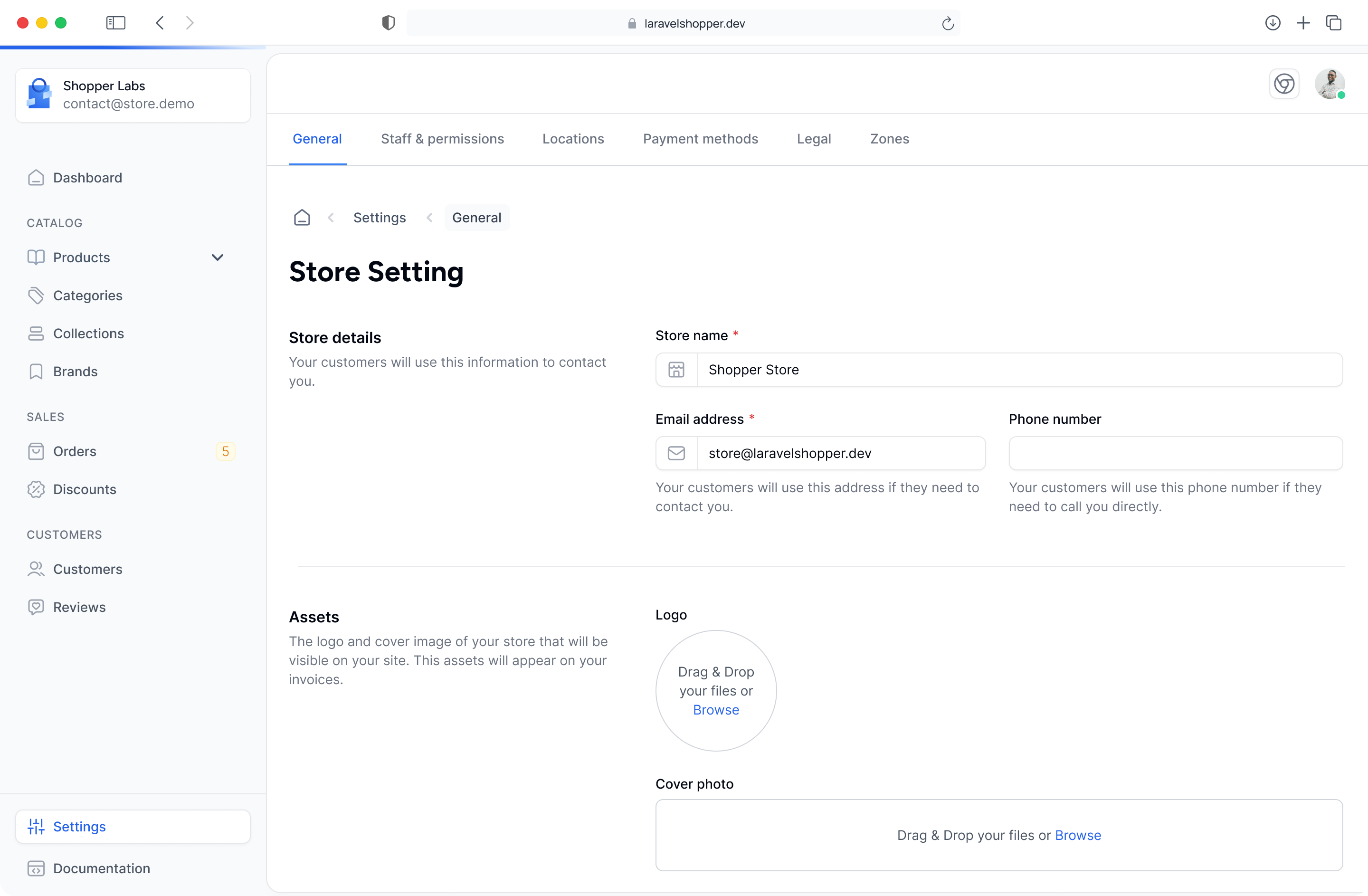Setup Store
Once you have installed Shopper, you need to set up a store to serve as your first location.
After creating a new user, you need to login via the url /cpanel/login. After logging in you need to fill
in the required information to access the Shopper dashboard
Defines your shop’s address country and state, where you are based as a seller. It'll determines default tax rates and customer locations.
Global
All this information is stored using the Setting Model which is located \Shopper\Core\Models\Setting
Fields
| Name | Type | Notes |
|---|---|---|
id |
autoinc | |
key |
string | Unique, the configuration key that will be used to retrieve this information. |
display_name |
string | Nullable, represents the display name for the key that has been set for better reading |
value |
json | Nullable, represents the value of the key that will be displayed when the parameter is requested |
locked |
boolean | default is false (0), allows to define if this parameter can be updated |
Retrieving setting
By default, to retrieve the value of a key you can use the helper function shopper_setting() passing the desired key as parameter
This value is cached for one day and under the key shopper-setting-{$key} by default, but if you want to retrieve each time the latest value you pass the second param withCache to false
Store
When you launch your store the first important thing to do is to fill in the information about this store. Your customers and the different services you might use need to know the information about your store.
The information stored in this section is available using the following keys:
namethe store name,emailthe store emailcurrenciesarray ids for the store currenciesdefault_currency_iddefault currency id of the storecountry_iddefault country location of the store.aboutdescription and information about your store
Address
Most stores keep their products in different locations around the world. When setting up this configuration you need to define an address that will be set as the default location for your products.
When shipping an order, the products to be delivered/shipped will start from this location and thus the shipping price can be set according to this.
The keys registered in database during this section: street_address, postal_code, city, phone_number
Social Links
If you want your customers to find you easily on social networks, you can fill in all the links directly by putting the full url.
This step is completely optional
The keys registered in the database during this section: facebook_link, instagram_link and twitter_link.
Channel
In today's E-commerce the shop site is no longer the only point of sale. Channels represent a single sales channel, which can be one of the following things:
- Website
- Mobile application
- Cashier in your physical store
- Facebook shop,
- Instagram shop,
- etc
or pretty much anything similar you can imagine. When you set up your store Shopper creates a sales channel at the same time as your first location with the same address information.
This sales channel will be automatically assigned to all products that are added to your site. The implementation of a sales channel management will be done later
Update setting
You can update your store information when needed, edit your store images, update the complete address, the legal name of your shop, etc. To edit your shop information:
- From your administration, on the sidebar click on the settings icon at the bottom of the page Settings > General
The component used to update store setting of the store is found in the component configuration file config/shopper/components/setting.php if published,
It's the Shopper\Livewire\Pages\Settings\General component under the key pages.general.
In this interface you will update your store. Don't forget that the model used is the model Shopper\Core\Models\Setting.
With the Shopper configuration you can completely change the architecture of this view and the data stored in the database.



